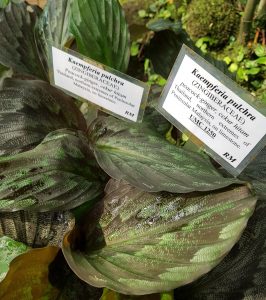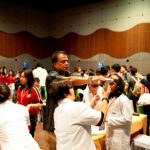4 May, 2019 – Together with our lecturers, Dr Chep Lee Lu Siang and Dr Anna Ling Pick Kiong, my classmates and I, who are students of the IMU Chinese Medicine programme, visited a botanical garden at University of Malaya (UM), Rimba Ilmu Botanical Garden. The visit to UM was mainly to provide us with an opportunity to learn about how to identify plants and to take plant samples for specimen making. Upon arrival at Rimba Ilmu Botanical Garden, all of us received a warm welcome from Dr Yong Kien Thai, a lecturer in UM who focuses his research in Botany, Systematics (Taxonomy) and Ecology. This visit began at the botanical museum where Dr Yong explained to us about how resin can be obtained from a tree and showed us the fruit of the Dipterocarpaceae family with 2 or more wings. These wings would enable it to be dispersed and propelled further away from the mother plant. 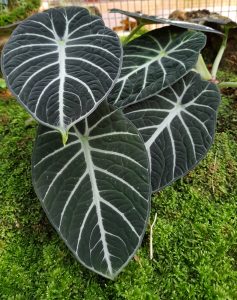
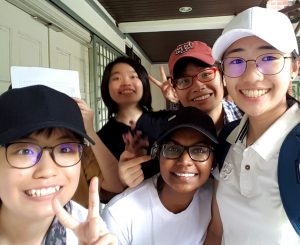
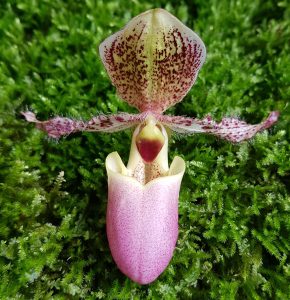 Shortly after this briefing, we went to a small garden outside the museum and began to identify the family of each plant based on their characteristics. The first plant we learned about was the palm tree from the Aracaceae family. What I found most interesting about this palm tree is the ring formed after the envelope-like sheath of each leaf breaks off as the plant grows upwards. We then entered the greenhouse to continue with our learning. We were so lucky to see how powdery orchid’s seeds look like and learn how it disperses its seeds from a capsule with the help of the wind and the germination process with the help of fungus. We also took samples of a few plants along the way to be made into specimens in a workshop session after the visit.
Shortly after this briefing, we went to a small garden outside the museum and began to identify the family of each plant based on their characteristics. The first plant we learned about was the palm tree from the Aracaceae family. What I found most interesting about this palm tree is the ring formed after the envelope-like sheath of each leaf breaks off as the plant grows upwards. We then entered the greenhouse to continue with our learning. We were so lucky to see how powdery orchid’s seeds look like and learn how it disperses its seeds from a capsule with the help of the wind and the germination process with the help of fungus. We also took samples of a few plants along the way to be made into specimens in a workshop session after the visit. 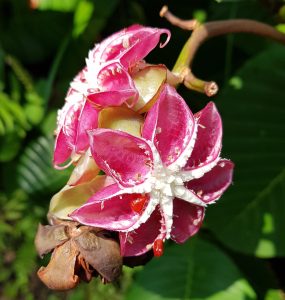
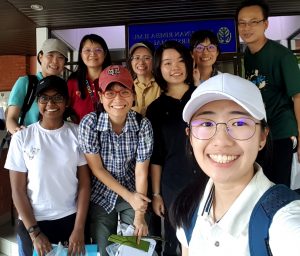
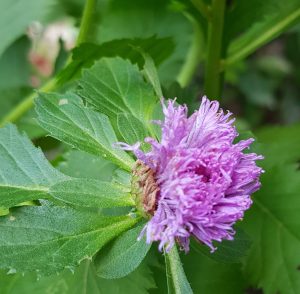 After spending some time in the greenhouse, we proceeded to visit the herbal medicinal garden and continued taking samplings and pictures of the plants. We didn’t stay in the garden for long as the sun was scorching hot on that day and there were mosquitoes everywhere. Soon after that, we headed back to the building and ended the visit by preparing the sampling of plants. This visit to the botanical garden was great as it gave us a better understanding of the various plants’ characteristics and identifiers. Identifying a plant family can be tricky as lots of the plants may look alike from each other but thanks to the guidance of Dr Yong, we are able to differentiate the plants and gained additional knowledge on this.
After spending some time in the greenhouse, we proceeded to visit the herbal medicinal garden and continued taking samplings and pictures of the plants. We didn’t stay in the garden for long as the sun was scorching hot on that day and there were mosquitoes everywhere. Soon after that, we headed back to the building and ended the visit by preparing the sampling of plants. This visit to the botanical garden was great as it gave us a better understanding of the various plants’ characteristics and identifiers. Identifying a plant family can be tricky as lots of the plants may look alike from each other but thanks to the guidance of Dr Yong, we are able to differentiate the plants and gained additional knowledge on this.
Written by Tee Min En and reviewed by Dr Chep Lee Related article: Fruitful Experience for IMU Chinese Medicine Students: Getting Close to Nature






